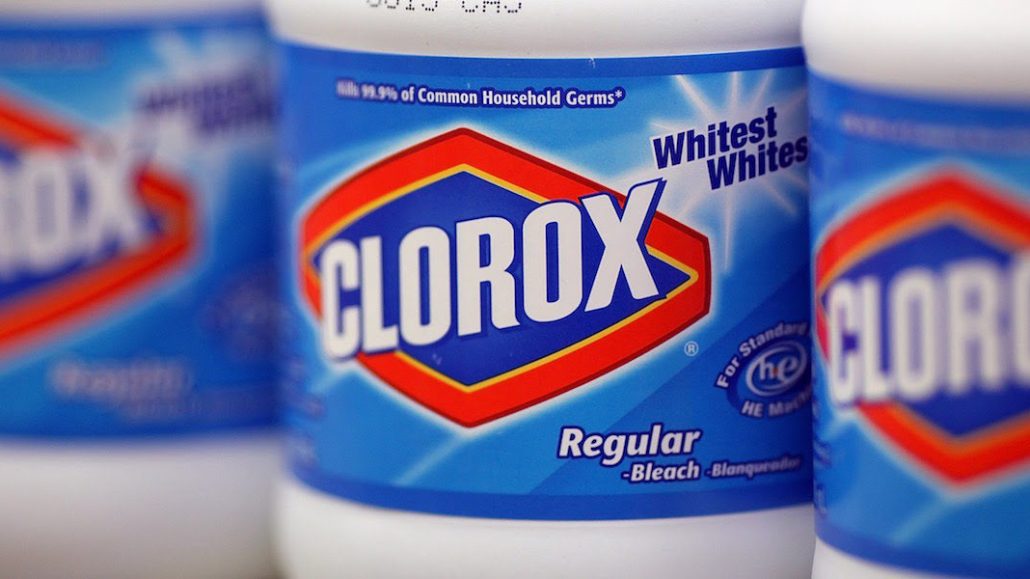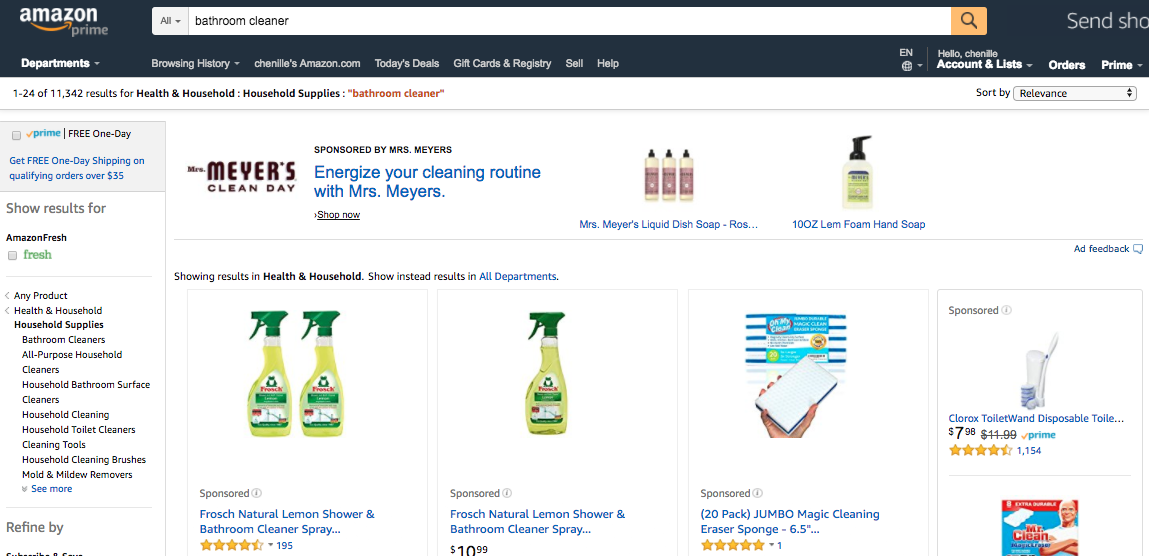
E-commerce has been on the rise in the U.S., thanks in part to the growing influence of Amazon. The Clorox Company — whose product portfolio includes Burt’s Bees, Brita, Kingsford and Glad — is responding by spending more on digital marketing with a focus on paid search on Amazon and its own data management platform, which will in turn lead to e-commerce sales growth.
Clorox has executed what it calls its “2020 Strategy” since 2013 to deliver long-term profitable growth through 2020. One pillar of the plan is using data and technology to improve marketing and essentially drive sales on the digital shelf, said Eric Reynolds, CMO for The Clorox Company. E-commerce — which Clorox defines as digital sales occurring on the likes of Amazon, Target.com, Walmart.com and Jet.com, rather than on its own website — now represents around 4 percent of its total company sales, compared to just under 5 percent at Procter & Gamble.
While Reynolds declined to disclose the baseline, he said that last year, Clorox’s e-commerce business grew by 50 percent overall and 98 percent on Amazon alone. “We see e-commerce as both a merchandising channel and a marketing channel,” he said. “We treat Amazon the same way we treat Google, YouTube and Facebook, for example.”
Running search marketing on Amazon with its media agency AKQA and executing lookalike audience targeting through Clorox’s in-house DMP, which the brand brought in-house in 2015, are two big drivers for the brand’s e-commerce growth, according to Reynolds. “Amazon is the fourth-largest search [platform] in the U.S. Buying keywords in our category on Amazon — just like paid search on Google — is an efficient way to reach consumers,” said Reynolds. “We are seeing great return on investment on Amazon because people are ready to buy there.”
For instance, if a shopper types in “bathroom cleaner” in the search bar on Amazon, a listing for the Clorox ToiletWand will show up as a sponsored ad in the right-hand column in search results.

“Sponsored product ads are the most common way for brands to bid on certain terms on Amazon. Those ads make a brand more discoverable,” said James Thomson, partner of Amazon consultancy Buy Box Experts. In the above example, Thomson said the sponsored ad doesn’t look like one from Clorox itself — instead, it is probably an ad from Amazon on behalf of Clorox, and Amazon — not Clorox — gets the final sale if a shopper makes a purchase through this listing.
“It’s normal for CPG brands to wholesale to Amazon Retail, and Amazon serves sponsored ads for them,” said Thomson. “Clorox probably still paid for the keyword ‘bathroom cleaner.’ Although Clorox doesn’t get the final sale, it can still build brand awareness on Amazon through search ads like this.”
In addition to Amazon, Clorox is running lookalike audience targeting through its in-house DMP to direct consumers to buy Clorox products on the likes of Amazon, Jet.com and Target.com, according to Reynolds. For instance, if people sign up for Kingsford email promotions, the marketing team at Clorox will go to its DMP and find other people with similar profiles — based on gender, age, purchase behavior and other traits — who may be interested in Kingsford, and then serve them ads, he said.
“We are seeing much higher ROI online through lookalike audience targeting,” said Reynolds.
Performance marketing aside, Reynolds said his team is focused on branding, looking to spend more ad dollars on storytelling and inject more personality to the Clorox brand. His team will continue to operate in a structure — dubbed “brand studios” internally — where Clorox’s brand managers, along with its media, social and digital planners, sit together with the company’s agencies to discuss ad campaigns.
Unlike Walmart, which provides insertion order-based media buys and programmatic display through Walmart Exchange, Clorox doesn’t plan on building its own media offerings in the near future because the traffic to Clorox’s website and those of its individual brands is low, according to Reynolds.
“We don’t want to be publishers,” he said. “Walmart and Target are selling ads on their sites, but it doesn’t make sense for us to do the same.”
More in Marketing

Pandora is betting on AI agents to scale service and emotional selling during the peak holiday season
Pandora is using AI agents to scale customer service and replicate emotional in-store selling online, just as peak season puts pressure on margins and teams.

Rembrand’s CEO wants to grow virtual ad placements in streaming, and he’s looking elsewhere for models
Omar Tawakol wants to improve advertising within the streaming world, and is working with advertisers and publishers to improve that experience.

Marketers are keen to use generative AI in ad campaigns, but hidden costs lurk
Marketers across the industry want to use AI to cut down on time spent in creative production. It’s not so simple in practice.








